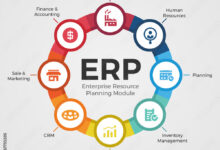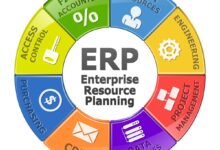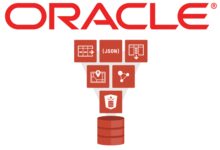Oracle ERP Pricing Calculator: 7 Powerful Insights You Need Now
Thinking about upgrading your business systems? The Oracle ERP pricing calculator is your ultimate tool to estimate costs and make smarter financial decisions—fast, accurate, and tailored to your needs.
Understanding the Oracle ERP Pricing Calculator

The Oracle ERP pricing calculator is more than just a cost estimator—it’s a strategic planning tool that helps businesses forecast their investment in Oracle’s enterprise resource planning (ERP) solutions. Whether you’re a mid-sized company or a global enterprise, understanding how this calculator works is the first step toward digital transformation. Oracle offers a suite of cloud-based ERP tools, including Oracle Fusion Cloud ERP, which integrates finance, procurement, project management, and supply chain operations into a single platform. To help potential users estimate their investment, Oracle provides a pricing calculator that factors in user roles, modules, deployment models, and service tiers.
What Is Oracle ERP?
Oracle ERP refers to a comprehensive suite of cloud-based applications designed to manage core business processes. It includes modules for financial management, human capital management (HCM), supply chain, procurement, and performance management. Unlike legacy on-premise systems, Oracle’s modern ERP is built on a cloud-first architecture, offering scalability, real-time analytics, and AI-driven automation. This makes it a preferred choice for organizations aiming to streamline operations and improve decision-making.
- Fusion Cloud ERP is Oracle’s flagship ERP product.
- Available as Software-as-a-Service (SaaS), eliminating the need for on-site hardware.
- Supports global compliance, multi-currency, and multi-language operations.
How the Oracle ERP Pricing Calculator Works
The Oracle ERP pricing calculator operates by allowing users to input specific business parameters such as the number of employees, required modules, user types (full access, limited access, or process-specific), and deployment preferences. Based on these inputs, the tool generates a customized cost estimate. While Oracle does not publicly disclose exact pricing formulas, the calculator gives a close approximation based on tiered subscription models. It also considers add-ons like advanced analytics, AI features, and integration services.
“The Oracle ERP pricing calculator transforms guesswork into data-driven planning, enabling CFOs and IT leaders to align ERP investments with business goals.” — Oracle Industry Analyst, 2023
Key Features of the Oracle ERP Pricing Calculator
The Oracle ERP pricing calculator is designed with usability and accuracy in mind. It’s not just a simple form—it’s an interactive tool that adapts to your business size, complexity, and growth plans. By leveraging real-time data and predefined pricing models, it delivers a transparent view of potential costs. This transparency is crucial for stakeholders who need to justify ERP investments to boards or finance teams.
Modular Cost Estimation
One of the standout features of the Oracle ERP pricing calculator is its ability to break down costs by module. You can select specific components like Financials, Procurement, Project Management, or Supply Chain Management and see how each contributes to the total cost. This modular approach allows businesses to start with essential modules and scale up as needed. For example, a company might begin with Financials and HCM and later add Supply Chain modules as operations expand.
- Each module has a defined pricing tier based on usage and user count.
- Costs are typically quoted on a per-user, per-month basis.
- Flexible bundling options reduce overall expenses for integrated deployments.
Role-Based User Pricing
Oracle ERP uses a role-based licensing model, which the pricing calculator reflects accurately. Instead of charging for every employee, Oracle categorizes users into types such as Full Access, Limited Access, and Process-Only. Full Access users (like finance managers) pay the highest rate, while Process-Only users (like approvers or viewers) are significantly cheaper. This model ensures you only pay for the level of functionality each user needs.
For example, a company with 500 employees might only need 50 Full Access licenses, 100 Limited Access, and 350 Process-Only licenses. The calculator applies the appropriate rates to each category, delivering a realistic total. This granular approach prevents over-provisioning and reduces total cost of ownership (TCO).
Factors That Influence Oracle ERP Pricing
While the Oracle ERP pricing calculator provides estimates, several variables affect the final cost. Understanding these factors helps businesses interpret the results and prepare for negotiations with Oracle sales teams. Pricing is not one-size-fits-all; it’s influenced by organizational size, industry, geographic location, and technical requirements.
Number of Users and User Types
The total number of users and their assigned roles are the most significant cost drivers. Oracle’s pricing scales with user count, but not linearly. Volume discounts are often available for large deployments. Additionally, the mix of user types impacts cost. A workforce with many Process-Only users will have a lower per-capita cost than one dominated by Full Access users.
For instance, a manufacturing company with 1,000 employees might deploy Oracle ERP with 100 Full Access, 200 Limited Access, and 700 Process-Only users. The calculator would apply rates like $150/month for Full Access, $75 for Limited, and $25 for Process-Only, resulting in a monthly estimate of $37,500. This level of detail helps CFOs model different scenarios.
Selected ERP Modules
Each Oracle ERP module carries its own price tag. The core Financials module is usually the most expensive, followed by Procurement, Project Management, and Supply Chain. Advanced modules like Risk Management or Advanced Financial Controls come at a premium. The pricing calculator allows you to toggle modules on and off, instantly showing how each addition affects the total.
According to Oracle’s official pricing page, a typical mid-sized company using Financials, Procurement, and HCM might expect to pay between $80 and $120 per user per month. Larger enterprises with complex needs can exceed $150 per user when advanced analytics and AI tools are included.
How to Access the Oracle ERP Pricing Calculator
Oracle does not make its ERP pricing calculator publicly available on its website in a standalone format. Instead, access is typically granted through a sales representative or via Oracle’s Cloud Marketplace. To get an accurate estimate, businesses must engage with Oracle’s sales team, who will guide them through the tool and customize inputs based on their specific needs.
Requesting a Demo or Quote
The most effective way to use the Oracle ERP pricing calculator is by requesting a personalized demo or quote. This process usually begins with filling out a form on Oracle’s website, specifying your industry, company size, and interest areas. A sales consultant will then contact you to schedule a session where they’ll input your data into the calculator and walk you through the results.
This consultative approach ensures accuracy and allows for real-time adjustments. For example, if you’re unsure whether to include the Project Management module, the consultant can show you the cost difference instantly. This interactive experience adds value beyond what a static calculator could offer.
Using Oracle Cloud Marketplace
For technical users and IT decision-makers, Oracle Cloud Marketplace offers a self-service environment where you can explore pricing for various cloud services, including ERP. While it doesn’t provide a full ERP cost simulation, it gives visibility into base subscription rates and add-on services. You can also deploy trial instances and estimate usage-based costs for compute, storage, and integration services.
Visit Oracle Cloud Marketplace to explore available ERP-related services and get a sense of baseline pricing. This is especially useful for organizations with in-house IT teams who want to model infrastructure costs alongside licensing fees.
Benefits of Using the Oracle ERP Pricing Calculator
The Oracle ERP pricing calculator is more than a financial tool—it’s a strategic asset. By providing early visibility into costs, it empowers organizations to plan budgets, compare vendors, and align technology investments with business objectives. The benefits extend beyond finance teams to include IT, operations, and executive leadership.
Improved Budget Forecasting
One of the biggest challenges in ERP implementation is unpredictable costs. Hidden fees for training, customization, and integration can derail budgets. The Oracle ERP pricing calculator mitigates this risk by offering a transparent, upfront estimate. This allows finance teams to create realistic budgets and secure funding with confidence.
For example, a healthcare provider planning a $2M digital transformation can use the calculator to break down ERP costs over a five-year period, including subscription fees, implementation services, and annual renewals. This level of detail strengthens grant applications and internal funding requests.
Comparison with Competing ERP Systems
The calculator also enables apples-to-apples comparisons with other ERP platforms like SAP S/4HANA Cloud, Microsoft Dynamics 365, or NetSuite. By inputting similar user counts and modules, businesses can benchmark Oracle’s pricing against alternatives. While direct public pricing for competitors isn’t always available, third-party reports and analyst data can supplement this analysis.
A 2023 Gartner study found that Oracle Fusion Cloud ERP offers a 15–20% lower total cost of ownership over five years compared to SAP for mid-sized enterprises. Tools like the pricing calculator make it easier to validate such claims with real data.
Common Misconceptions About Oracle ERP Pricing
Despite the availability of the Oracle ERP pricing calculator, many organizations operate under outdated assumptions about ERP costs. These misconceptions can lead to poor decision-making, budget overruns, or resistance to digital transformation. It’s essential to separate myth from reality when evaluating Oracle’s pricing model.
Myth: Oracle ERP Is Only for Large Enterprises
Many believe Oracle ERP is too expensive for mid-sized businesses. While it’s true that Oracle serves Fortune 500 companies, its cloud-based pricing model has made it accessible to smaller organizations. With scalable licensing and pay-as-you-go options, companies with 200–1,000 employees can deploy Oracle ERP at a manageable cost.
For example, a regional logistics firm with 300 employees deployed Oracle ERP Financials and Procurement for under $50,000 annually—well within the budget of many mid-market firms. The pricing calculator helped them identify cost-saving opportunities through user role optimization.
Myth: The Calculator Gives Final Pricing
Another common misconception is that the Oracle ERP pricing calculator provides a binding quote. In reality, it’s a preliminary estimate. Final pricing depends on negotiation, contract length, included services, and regional pricing policies. The calculator is a starting point, not the final word.
Organizations should use the estimate as a benchmark during discussions with Oracle sales representatives. It empowers them to ask informed questions and challenge assumptions, leading to better deals.
Alternatives and Complementary Tools to the Oracle ERP Pricing Calculator
While Oracle’s official calculator is powerful, it’s not the only tool available. Third-party consultants, independent pricing models, and ERP comparison platforms offer alternative ways to estimate costs. These tools can complement Oracle’s calculator by providing unbiased insights and benchmarking data.
Third-Party ERP Cost Estimators
Several consulting firms and software review platforms offer ERP cost estimation tools. For example, Software Advice and Gartner provide interactive tools that compare ERP vendors based on user reviews, pricing, and functionality. These platforms often include user-submitted cost data, giving a real-world perspective on Oracle ERP expenses.
While not as detailed as Oracle’s internal calculator, these tools are valuable for initial research and vendor shortlisting. They help businesses understand market averages and identify potential red flags.
Custom Financial Modeling in Spreadsheets
Many organizations build their own ERP cost models using Excel or Google Sheets. These models incorporate data from Oracle’s calculator, vendor quotes, implementation timelines, and internal labor costs. By creating a custom financial model, companies gain full control over assumptions and can simulate different scenarios.
For instance, a company might model the impact of delaying the Supply Chain module by six months, freeing up capital for other initiatives. This level of flexibility is not possible with Oracle’s calculator alone.
Oracle ERP Pricing Calculator: Real-World Use Cases
To truly understand the value of the Oracle ERP pricing calculator, it helps to examine real-world applications. Organizations across industries have used the tool to plan migrations, secure funding, and optimize licensing. These case studies highlight best practices and lessons learned.
Manufacturing Company Streamlines Global Operations
A multinational manufacturer with operations in Europe, Asia, and North America used the Oracle ERP pricing calculator to plan a global ERP rollout. With 5,000 employees and complex supply chains, they needed a solution that could handle multi-currency transactions, compliance, and real-time reporting.
Using the calculator, they estimated a total cost of $3.2 million over three years, including licensing, implementation, and training. The breakdown by region and user role helped them allocate budgets accurately and prioritize high-impact modules. The transparency provided by the calculator was instrumental in gaining executive buy-in.
University Upgrades Financial Systems
A large public university faced challenges with its legacy financial system, including slow reporting and compliance risks. Administrators used the Oracle ERP pricing calculator to estimate the cost of migrating to Oracle Fusion Cloud ERP for Financials and Grants Management.
The calculator showed a five-year cost of $1.8 million, significantly lower than initial fears. By optimizing user roles—assigning Process-Only licenses to faculty reviewers and Limited Access to department managers—they reduced licensing costs by 30%. The university secured funding and completed the migration within budget.
What is the Oracle ERP pricing calculator?
The Oracle ERP pricing calculator is a tool provided by Oracle to help businesses estimate the cost of implementing Oracle Fusion Cloud ERP. It considers factors like user count, roles, selected modules, and deployment options to generate a customized cost projection.
Is the Oracle ERP pricing calculator free to use?
Yes, the calculator is free, but access is typically granted through Oracle sales representatives. You’ll need to engage with Oracle’s sales team to use the tool and receive a personalized estimate.
Can the calculator include implementation and training costs?
The primary focus is on subscription and licensing fees. However, Oracle consultants may include implementation, training, and support costs in a comprehensive quote generated alongside the calculator’s output.
How accurate is the Oracle ERP pricing calculator?
It provides a highly accurate estimate based on standard pricing models. However, final costs may vary due to negotiations, regional pricing, and additional services. It’s best used as a planning tool rather than a binding quote.
Can I compare Oracle ERP costs with other systems using the calculator?
The calculator is specific to Oracle products. For comparisons with SAP, Microsoft, or NetSuite, you’ll need to use third-party tools or request quotes from multiple vendors to benchmark costs.
Understanding the Oracle ERP pricing calculator is essential for any organization considering Oracle’s cloud-based ERP solutions. It provides transparency, supports budget planning, and enables informed decision-making. While it’s not a standalone public tool, its value becomes clear through engagement with Oracle’s sales team. By leveraging the calculator alongside third-party insights and internal financial models, businesses can confidently navigate the complexities of ERP pricing and make strategic investments that drive long-term growth.
Further Reading:







